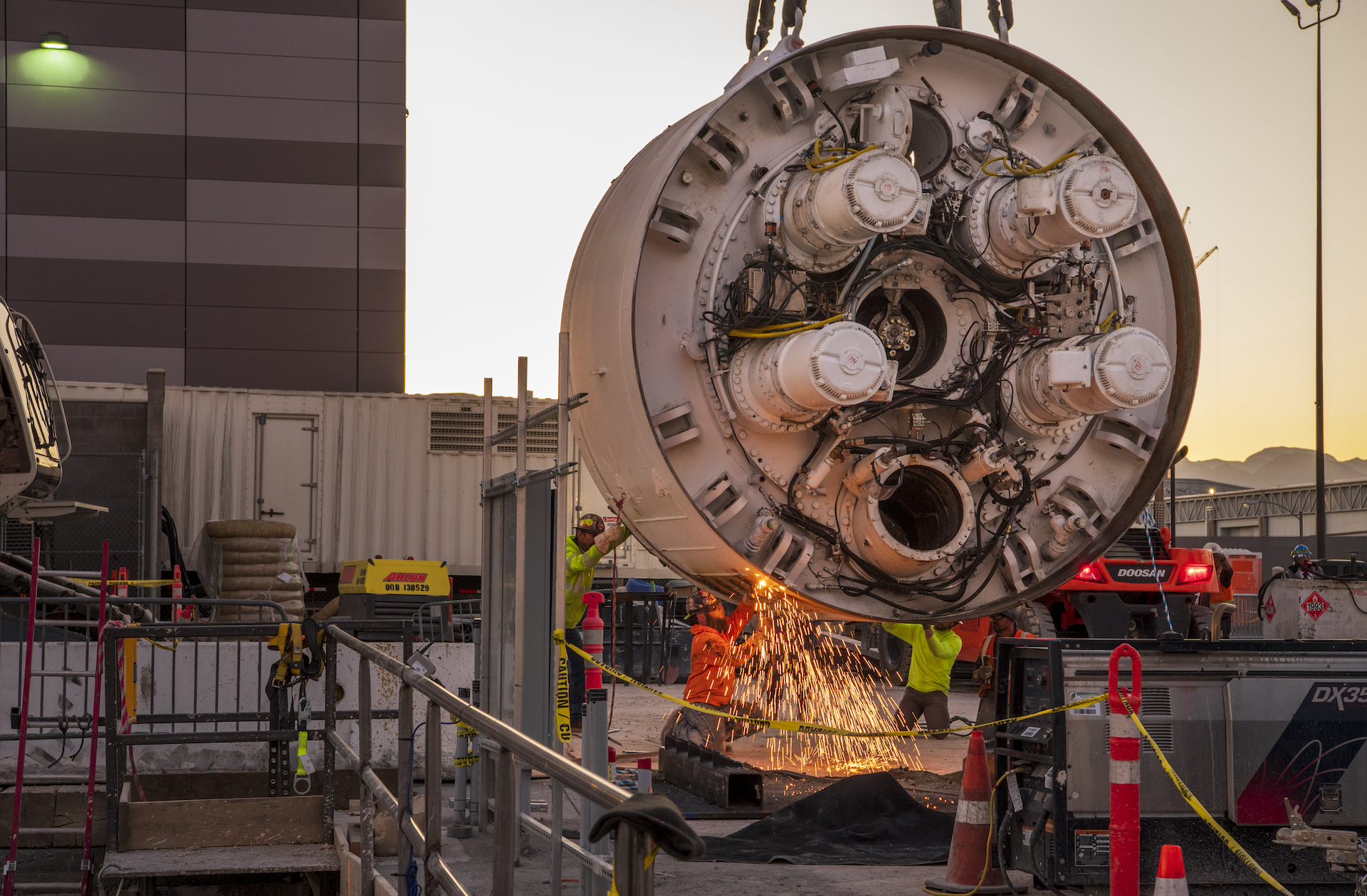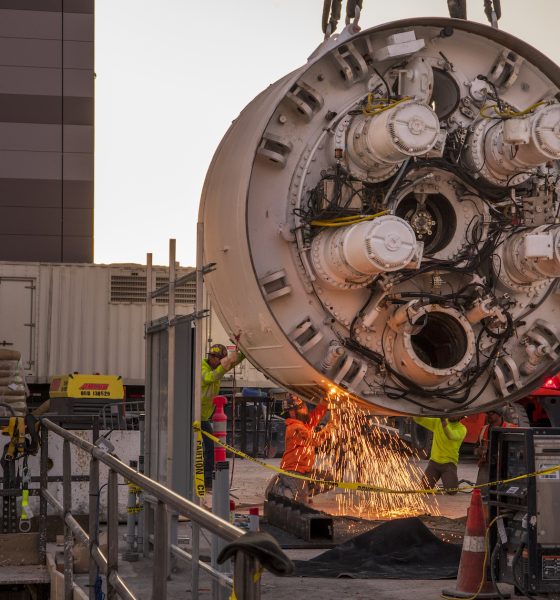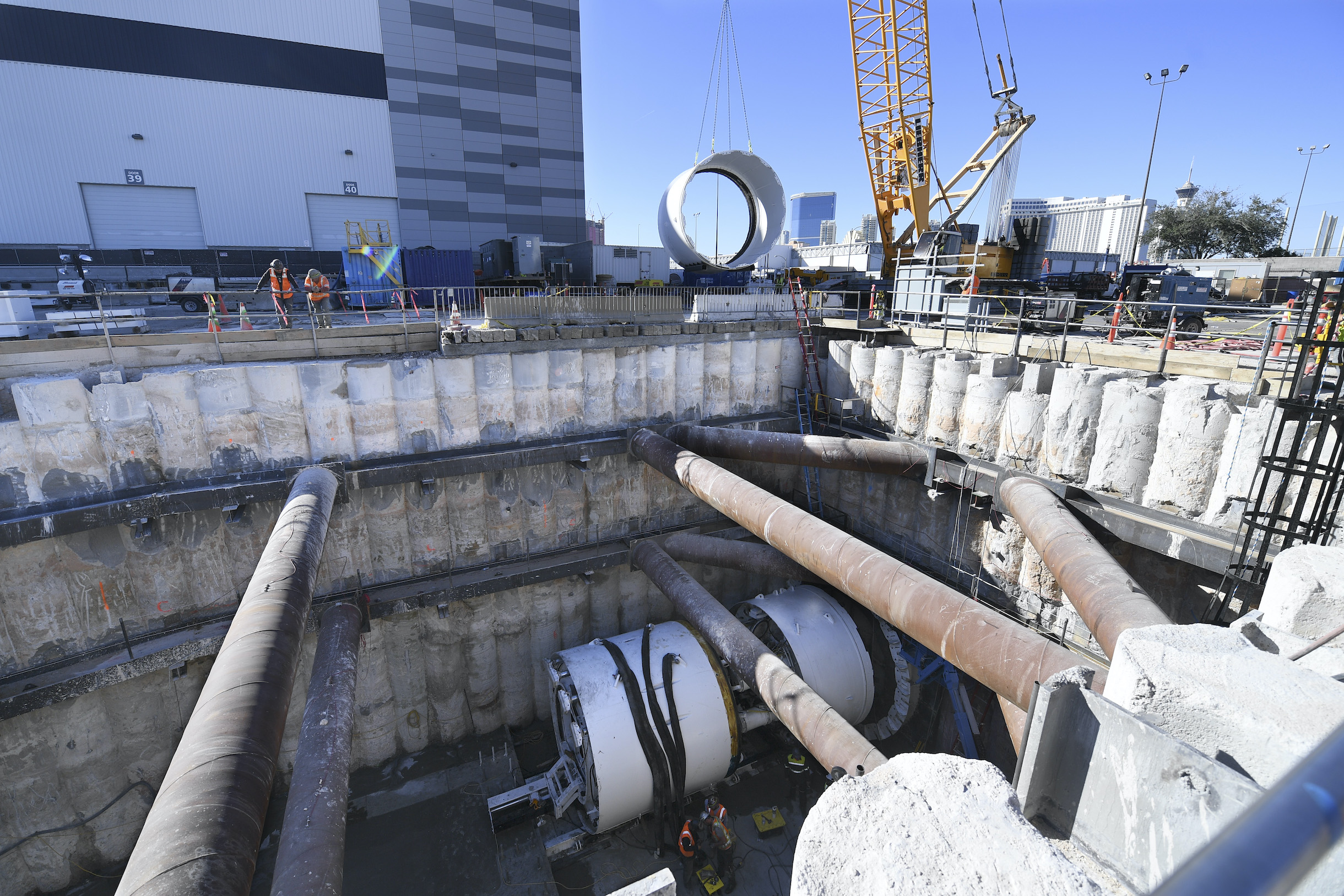

News
Elon Musk’s Boring Company gets stern dismissal from tunneling veteran: ‘Something like that doesn’t work’
Elon Musk’s companies have a pretty strong tendency to attract their own fair share of critics, including those in notable positions in their respective industries. This was the case with Tesla and its electric vehicles, and the same was true with SpaceX and its reusable orbital-class rockets. The Boring Company, another one of Elon Musk’s ventures, is now gathering its own skeptics as well, with Martin Herrenknecht, the founder of Herrenknecht AG, one of the world’s premier tunnel boring machine (TBM) makers, recently expressing his doubts about the tunneling startup.
German business publication Manager Magazin recently interviewed Herrenknecht. When asked about Elon Musk’s tunneling aspirations with The Boring Company, the Herrenknecht AG founder was dismissive, noting that he believes the Tesla and SpaceX CEO is overrated, at least when it comes to tunnel construction. The executive added that his company’s TBMs are far more advanced than the Boring Company’s tunneling machines today.

“For my industry, I see Musk above all as a skillful whisker. He claims that he can build tunnels faster and cheaper than others and is causing a stir. On his reference project in Las Vegas, Musk drilled 20 meters in one week. We can do the same route in one day,” he said. (Despite Herrenknecht’s statement, Teslarati has been informed that The Boring Company has already managed to dig 40 meters in a 24-hour period using its first machine, Godot.)
Explaining further, Herrenknecht noted that it would be very challenging for Elon Musk to become competent in the tunneling industry. The executive noted that he believes The Boring Company will not reach the same heights as Musk’s other ventures like Tesla and SpaceX in the next ten years or so due to the complexity of the tunneling segment. “I think the degree of difficulty and complexity in tunneling are higher,” Herrenknecht remarked.
Interestingly enough, the executive also shared a personal anecdote about Elon Musk himself. As per Herrenknecht, Musk actually approached Herrenknecht AG for the potential purchase of a tunnel boring machine for The Boring Company in the past. However, during the negotiations, Elon Musk reportedly exhibited “strange business behavior,” leaving the room for long periods and suggesting numerous ideas. Musk was also adamant in reducing the price of TBMs from $10 million to just $2 million.
“It was pretty chaotic because he left the room several times for a long time and kept coming up with different ideas… Something like that doesn’t work,” Herrenknecht said.

Needless to say, The Boring Company did not purchase a TBM from Herrenknecht AG. The tunneling startup did manage to purchase its tunneling machines from another company, the first of which was used to complete a test tunnel in Hawthorne, CA. Elon Musk has also announced that The Boring Company is working on developing an all-electric TBM called Prufrock, which has the potential to dig tunnels significantly faster than the industry’s best today.
Elon Musk’s ill-fated meeting with Herrenknecht AG echoes some elements of the Tesla CEO’s meeting with the Russians in 2001. Back then, Musk was aiming to purchase intercontinental ballistic missiles that could be used to launch some payloads to space. The discussions ultimately broke down because of the missiles’ cost, and on the trip back to the United States, Musk figured that building rockets would be feasible. SpaceX was founded the year later, and the rest is history.
It remains to be seen if The Boring Company would be the disruptor that Elon Musk plans it to be. That being said, skeptics of the tunneling startup today seem to be following the same patterns as Tesla and SpaceX’s critics, most of whom have been proven wrong over the years. If any, Herrenknecht’s references to the Tesla CEO’s aggressive cost-cutting demands and out-of-the-box ideas are classic Elon Musk. And just like critics before him, the executive reacted adversely to the CEO.
It would then be interesting to see if The Boring Company, at least in the coming years, could rise enough to challenge the titans of the TBM industry, just like its fellow Elon Musk-led companies Tesla and SpaceX. At least for now, history seems to favor Elon Musk and his bold companies, all of which are noted and respected for their unorthodox nature and aggressive strategies.
Don’t hesitate to contact us for news tips. Just send a message to tips@teslarati.com to give us a heads up.

News
Tesla starts showing how FSD will change lives in Europe
Local officials tested the system on narrow country roads and were impressed by FSD’s smooth, human-like driving, with some calling the service a game-changer for everyday life in areas that are far from urban centers.

Tesla has launched Europe’s first public shuttle service using Full Self-Driving (Supervised) in the rural Eifelkreis Bitburg-Prüm region of Germany, demonstrating how the technology can restore independence and mobility for people who struggle with limited transport options.
Local officials tested the system on narrow country roads and were impressed by FSD’s smooth, human-like driving, with some calling the service a game-changer for everyday life in areas that are far from urban centers.
Officials see real impact on rural residents
Arzfeld Mayor Johannes Kuhl and District Administrator Andreas Kruppert personally tested the Tesla shuttle service. This allowed them to see just how well FSD navigated winding lanes and rural roads confidently. Kruppert said, “Autonomous driving sounds like science fiction to many, but we simply see here that it works totally well in rural regions too.” Kuhl, for his part, also noted that FSD “feels like a very experienced driver.”
The pilot complements the area’s “Citizen Bus” program, which provides on-demand rides for elderly residents who can no longer drive themselves. Tesla Europe shared a video of a demonstration of the service, highlighting how FSD gives people their freedom back, even in places where public transport is not as prevalent.
What the Ministry for Economic Affairs and Transport says
Rhineland-Palatinate’s Minister Daniela Schmitt supported the project, praising the collaboration that made this “first of its kind in Europe” possible. As per the ministry, the rural rollout for the service shows FSD’s potential beyond major cities, and it delivers tangible benefits like grocery runs, doctor visits, and social connections for isolated residents.
“Reliable and flexible mobility is especially vital in rural areas. With the launch of a shuttle service using self-driving vehicles (FSD supervised) by Tesla in the Eifelkreis Bitburg-Prüm, an innovative pilot project is now getting underway that complements local community bus services. It is the first project of its kind in Europe.
“The result is a real gain for rural mobility: greater accessibility, more flexibility and tangible benefits for everyday life. A strong signal for innovation, cooperation and future-oriented mobility beyond urban centers,” the ministry wrote in a LinkedIn post.
News
Tesla China quietly posts Robotaxi-related job listing
Tesla China is currently seeking a Low Voltage Electrical Engineer to work on circuit board design for the company’s autonomous vehicles.

Tesla has posted a new job listing in Shanghai explicitly tied to its Robotaxi program, fueling speculation that the company is preparing to launch its dedicated autonomous ride-hailing service in China.
As noted in the listing, Tesla China is currently seeking a Low Voltage Electrical Engineer to work on circuit board design for the company’s autonomous vehicles.
Robotaxi-specific role
The listing, which was shared on social media platform X by industry watcher @tslaming, suggested that Tesla China is looking to fill the role urgently. The job listing itself specifically mentions that the person hired for the role will be working on the Low Voltage Hardware team, which would design the circuit boards that would serve as the nervous system of the Robotaxi.
Key tasks for the role, as indicated in the job listing, include collaboration with PCB layout, firmware, mechanical, program management, and validation teams, among other responsibilities. The role is based in Shanghai.
China Robotaxi launch
China represents a massive potential market for robotaxis, with its dense urban centers and supportive policies in select cities. Tesla has limited permission to roll out FSD in the country, though despite this, its vehicles have been hailed as among the best in the market when it comes to autonomous features. So far, at least, it appears that China supports Tesla’s FSD and Robotaxi rollout.
This was hinted at in November, when Tesla brought the Cybercab to the 8th China International Import Expo (CIIE) in Shanghai, marking the first time that the autonomous two-seater was brought to the Asia-Pacific region. The vehicle, despite not having a release date in China, received a significant amount of interest among the event’s attendees.
Elon Musk
Elon Musk and Tesla AI Director share insights after empty driver seat Robotaxi rides
The executives’ unoccupied tests hint at the rapid progress of Tesla’s unsupervised Robotaxi efforts.

Tesla CEO Elon Musk and AI Director Ashok Elluswamy celebrated Christmas Eve by sharing personal experiences with Robotaxi vehicles that had no safety monitor or occupant in the driver’s seat. Musk described the system’s “perfect driving” around Austin, while Elluswamy posted video from the back seat, calling it “an amazing experience.”
The executives’ unoccupied tests hint at the rapid progress of Tesla’s unsupervised Robotaxi efforts.
Elon and Ashok’s firsthand Robotaxi insights
Prior to Musk and the Tesla AI Director’s posts, sightings of unmanned Teslas navigating public roads were widely shared on social media. One such vehicle was spotted in Austin, Texas, which Elon Musk acknowleged by stating that “Testing is underway with no occupants in the car.”
Based on his Christmas Eve post, Musk seemed to have tested an unmanned Tesla himself. “A Tesla with no safety monitor in the car and me sitting in the passenger seat took me all around Austin on Sunday with perfect driving,” Musk wrote in his post.
Elluswamy responded with a 2-minute video showing himself in the rear of an unmanned Tesla. The video featured the vehicle’s empty front seats, as well as its smooth handling through real-world traffic. He captioned his video with the words, “It’s an amazing experience!”
Towards Unsupervised operations
During an xAI Hackathon earlier this month, Elon Musk mentioned that Tesla owed be removing Safety Monitors from its Robotaxis in Austin in just three weeks. “Unsupervised is pretty much solved at this point. So there will be Tesla Robotaxis operating in Austin with no one in them. Not even anyone in the passenger seat in about three weeks,” he said. Musk echoed similar estimates at the 2025 Annual Shareholder Meeting and the Q3 2025 earnings call.
Considering the insights that were posted Musk and Elluswamy, it does appear that Tesla is working hard towards operating its Robotaxis with no safety monitors. This is quite impressive considering that the service was launched just earlier this year.








